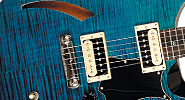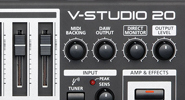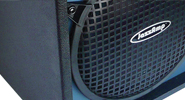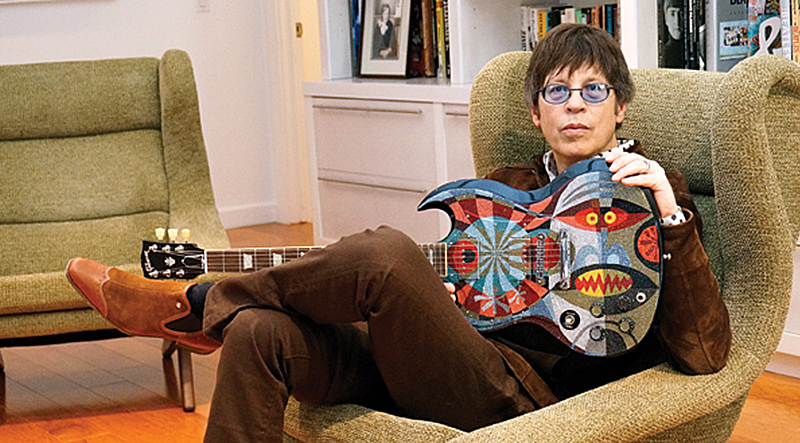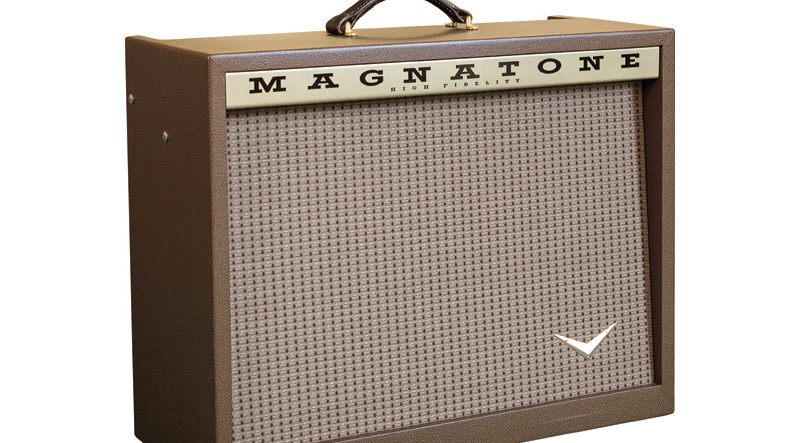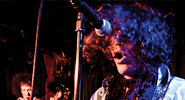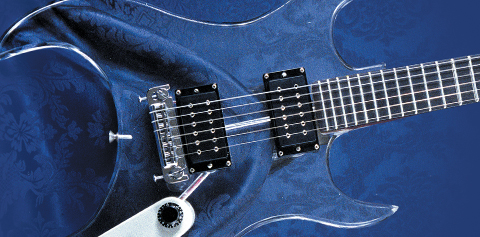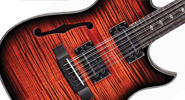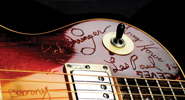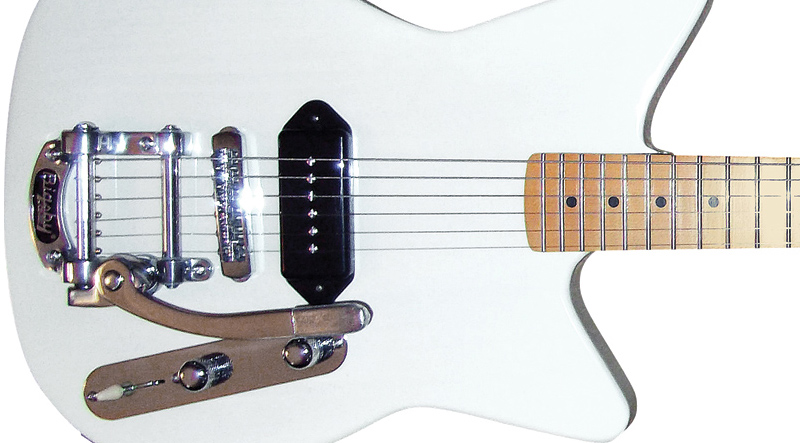
While most guitarists are familiar with PRS (and some dream every day of adding one of the company’s Private Stock axes to their collection), the company’s import SE line typically gets much less play in the git-tar press.
Developed at the request of Carlos Santana so beginners and “weekend warriors” could experience playing a PRS at a more affordable price, SE series instruments run between $600 and about $900 retail. But their quality, tone, and playability are very much in line with a top-tier professional instrument. The line consists of 10 guitars, including two artist signature models (the Mark Tremonti SE and Paul Allender SE), the SE standard, SE Custom, SE Singlecut, SE Soapbar II, and the brand-new SE Custom Semi-Hollow PRS sent for our perusal.
The SE Custom Semi-Hollow has a chambered double-cutaway mahogany body with a 1/4” flame-maple cap, a soundhole on the lower bass bout, a set 25”-scale “wide fat” mahogany neck with a 10” radius rosewood fretboard, moon inlays, a small three-ply (black/white/black) pickguard, black speed knobs, and natural-finished wood binding. Unlike its U.S.-made counterpart Custom, the SE Custom Semi-Hollow has a flat top, but retains PRS’ elegant double-cutaway body design with scooped contour on the treble-side cutaway.
Hardware on the Semi-Hollow includes PRS’ proprietary wraparound tailpiece (which adjusts intonation by moving the entire tailpiece in or out using two small Allen screws), PRS-designed die-cast tuners, and strap buttons. The SE Custom Semi-Hollow is equipped with two PRS-designed exposed-coil humbuckers mounted in crème-colored pickup rings and controlled via a single master volume, master tone, and three-way toggle pickup selector. PRS uses full-sized pots, an open-frame three-way toggle selector, and shields the control cavity and cavity covers on all SE models.
Coming to us straight from the floor of the NAMM show, our SE Custom Semi-Hollow prototype is finished in Matteo Blue over a flame-maple veneer with a gloss-black body and neck.
Playability on the prototype was excellent; a dead-on straight neck with low, buzz-free action, nicely polished frets with rounded ends and a very comfortable neck profile, as well as very good access to the 22nd fret. Even though PRS calls this their “wide fat” neck profile, the width at the nut is still the standard 111/16” and the profile and slightly rolled edge make the neck feel anything but “chunky.” The combination of light weight (just over six pounds) semi-hollow body, maple top, and the wraparound tail give the Semi-Hollow a clear, resonant acoustic tone. The well-conceived, low-profile design of the PRS bridge doesn’t feel bulky or uncomfortable, as wraparound bridges sometimes can. And even though individual string intonation isn’t an option, intonation was near perfect.
To hear it, we plugged the Semi-Hollow into a Koch Twintone II 1×12” tube combo. The guitar’s excellent acoustic clarity was evident even before we plugged it in. And once we did add AC, we found all three pickup combinations to be very well-balanced, with a lush, fat tone through the Koch’s clean channel. The 25” scale length and semi-hollow construction combine to give the guitar a more-than-ample variety of clean tones, from a bright, snappy sound in the selector’s bridge and middle position, to a fat, dark jazzbox tone with the tone control rolled back and the selector in the neck position. The semi-hollow body adds punch to low-end response and warmth to the midrange, while the maple top helps it maintain clear high-end.
The guitar also performed well through the overdrive channel of the Koch, offering a clear, solid, crunchy, even rock tone with excellent note separation, even as we rolled up the amplifier’s gain. The PRS-designed humbuckers in our tester are not your standard run-of-the-mill import fare; rather, they are very nicely voiced (especially for 25”-scale guitars) with substantial gain and no feedback issues.
The selection of finishes and exotic woods may be limited with the SE Custom Semi-Hollow when compared to PRS’ core domestic models, but with its pro-level build quality, killer looks, solid tone, and effortless playability, the SE Custom Semi-Hollow is certainly worthy of the Paul Reed Smith name.
PRS SE Custom Semi-Hollow
Price: $858
Contact: PRS Guitars, 380 Log Canoe Circle, Stevensville MD 21666; www.prsguitars.com.
This article originally appeared in VG May 2007 issue. All copyrights are by the author and Vintage Guitar magazine. Unauthorized replication or use is strictly prohibited.

